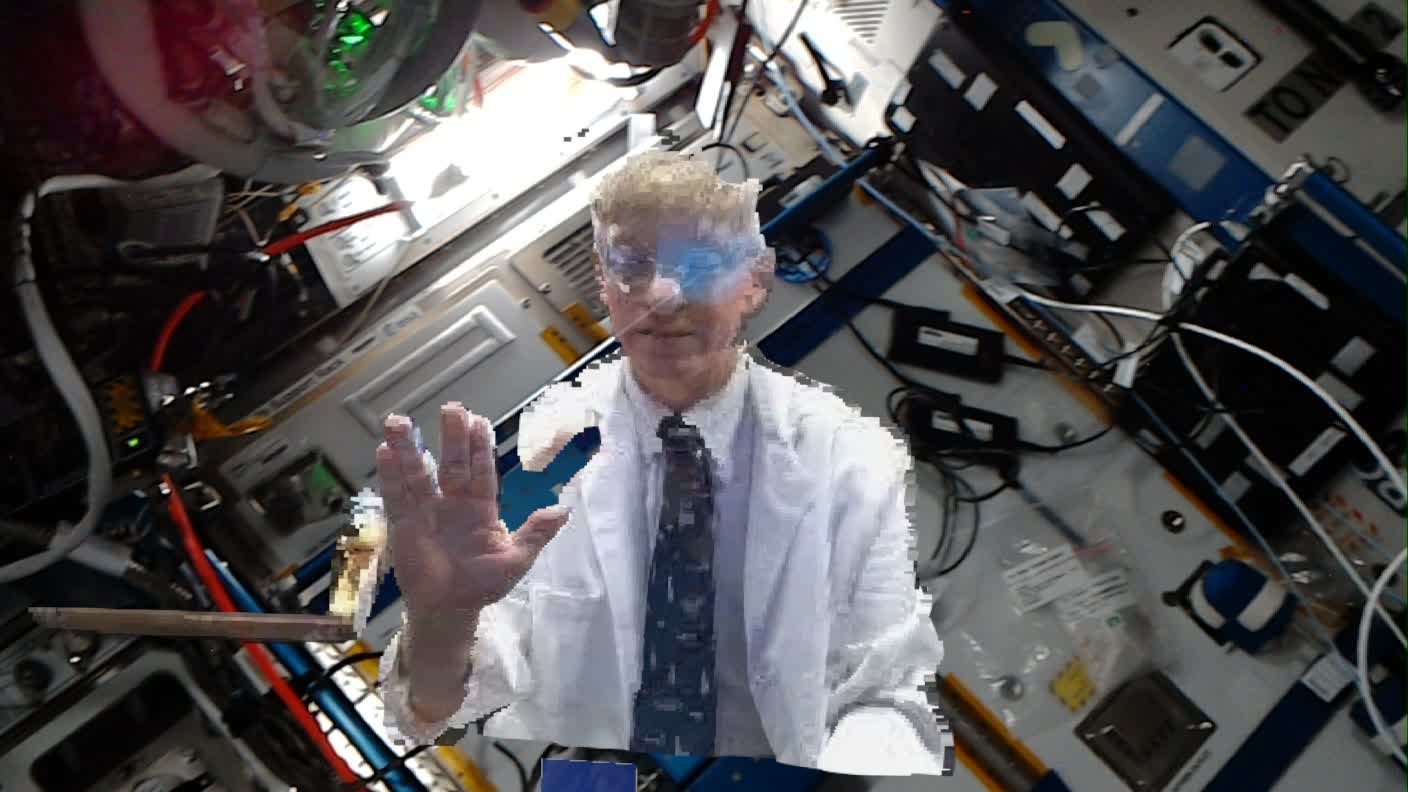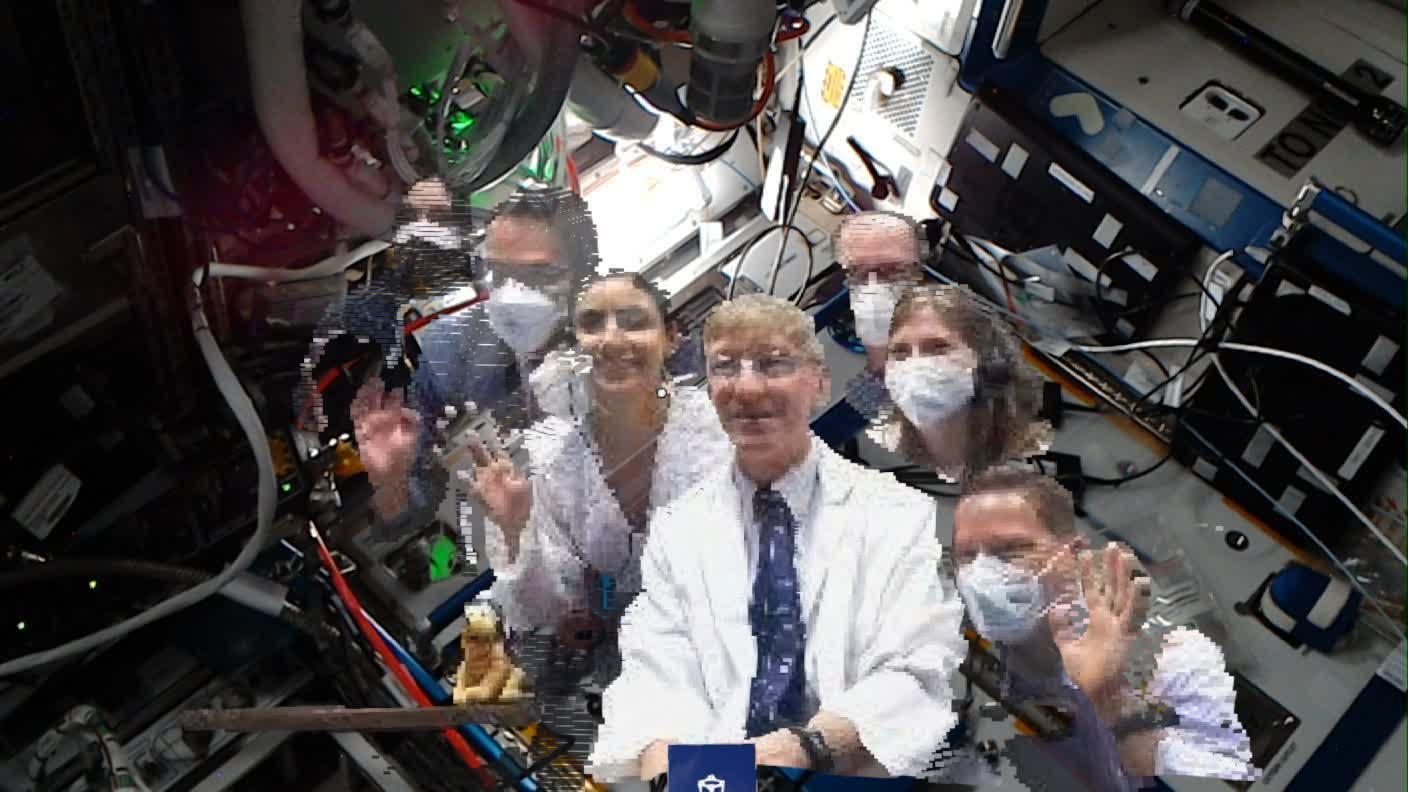In brief: Say the words holographic doctor, and many people—well, Star Trek fans—might think of the dry-witted Emergency Medical Hologram Mark I, aka The Doctor, from Star Trek: Voyager. But while that sort of technology is still a few centuries away, the next best thing is currently being used—thanks to Microsoft and NASA.
NASA writes (via Space.com) that a team of doctors was last year "holoported" to the International Space Station (ISS) using the Microsoft HoloLens Kinect camera and some custom software. It allowed astronaut Thomas Pesquet to have a two-way conversation with live images of NASA flight surgeon Dr. Josef Schmid and Fernando De La Peña Llaca, CEO of software provider Aexa Aerospace, in the middle of the ISS.
Holoportation allows 3D models of people to be transmitted live anywhere in real-time. When combined with a mixed reality headset such as the HoloLens, users can see, hear, and interact with remote participants as if they are present in the same physical space. It's been around since 2016, but this is the first time it has been used somewhere as remote as outer space.
"It doesn't matter that the space station is traveling 17,500 mph [28,000 kilometers per hour] and in constant motion in orbit 250 miles [400 km] above Earth, the astronaut can come back three minutes or three weeks later and with the system running, we will be there in that spot, live on the space station," Schmid said.
This is only the first step in NASA's plan. The next stage will be two-way communication where astronauts are holoported back to earth as well as sending Earth-bound users into space. That will be followed by mixing holoportation with Augmented Reality and haptics, which could allow astronauts to work on equipment alongside someone from Earth as if they were actually there.
NASA notes that holoportation technology could also have applications in extreme environments on our planet, such as Antarctica, offshore oil rigs, or military operation theaters. It may also be utilized in future deep-space missions such as those heading to Mars.
Earlier this year, we heard that Microsoft's metaverse initiative was apparently in disarray as leadership of the company's mixed-reality and HoloLens divisions had been unable to adopt a clear strategy, resulting in low morale, confusion, and exodus among employees, as well as canceled projects like the HoloLens 3 that was reportedly shelved last year after Microsoft decided to partner with Samsung.
https://www.techspot.com/news/94298-nasa-beamed-holographic-doctors-international-space-station.html

